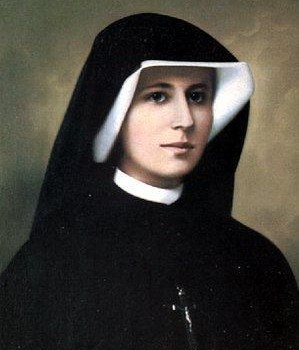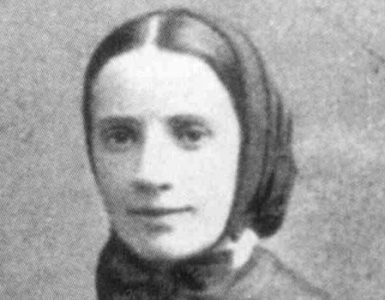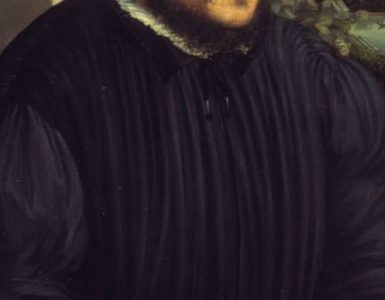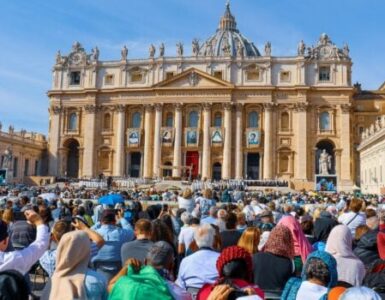Maria Faustina was born Helena Kowalska in Glogowiec, Poland, in 1905. Intensely spiritual from an early age, Helena was drawn to the pious life as a small child. She loved to spend time talking to Jesus in prayer and found happiness in retelling the stories about the lives of the saints. Reportedly, by the time she was ten, she had already received multiple visions of the Blessed Mother. At the age of seven, she remembers hearing the voice of Jesus calling her to religious life.
Helena’s parents sent her away when she was 16 years old to work as a domestic for a wealthy family. Following a particularly vivid vision, she returned home to get permission to join a convent. Her parents were opposed to this choice of vocation and refused to help her with a dowry to join a religious order — a custom of the time. Suffering for a few years under the obedience of her parents, she was finally freed to join the Sisters of Our Lady of Mercy in 1925. She took the name Faustina, which means fortunate, at her first vows in 1928.
Faustina experienced many visions, prophesies, and other internal spiritual graces during her lifetime and suffered greatly from ridicule and persecution from those who did not understand. Her most intense vision came to her on the evening of February 22, 1931. In this vision, Jesus appeared to her, clutching His chest with one hand near His Sacred Heart and the other stretched forth in a blessing. From His heart emanated two rays, one red and one white. Jesus charged Faustina with the task of spreading this devotion to His Sacred Heart, called the Divine Mercy.
Jesus asked Faustina to make a painting of His image as a remembrance of her experience and for the salvation of the souls who would venerate it. Throughout her life, Jesus appeared to Faustina many times bestowing gifts of spiritual direction, prayer and guidance. He instilled in her the meaning of salvific suffering and the complete understanding of His infinite mercy. His message to this simple woman, who had only three years of formal education, contained the words and thoughts that fill a diary known today as Divine Mercy in My Soul.
Devotion to the Divine Mercy began almost immediately after Faustina’s visions and continued well after her death. However, the Church banned the devotion from 1959 to 1978 due to some misunderstandings. Pope John Paul II, who began his devotion as a young priest in Poland, was instrumental in lifting the ban. He beatified Faustina in 1993 and she was canonized on Divine Mercy Sunday (the first Sunday after Easter) in the Jubilee Year of 2000.
Faithful around the world recite the Divine Mercy prayers daily at 3 p.m., the hour of Great Mercy. The invocation, “Jesus, I trust in You!” has become a source of great appeal to His Most Sacred Heart.
Other Saints We Remember Today
St. Placid and Companions (541), Religious, Martyrs
Blessed Raymond of Capua (1399), Spiritual Director of St. Catherine of Siena
St. Flora of Beaulieu (1347), Virgin, Religious












